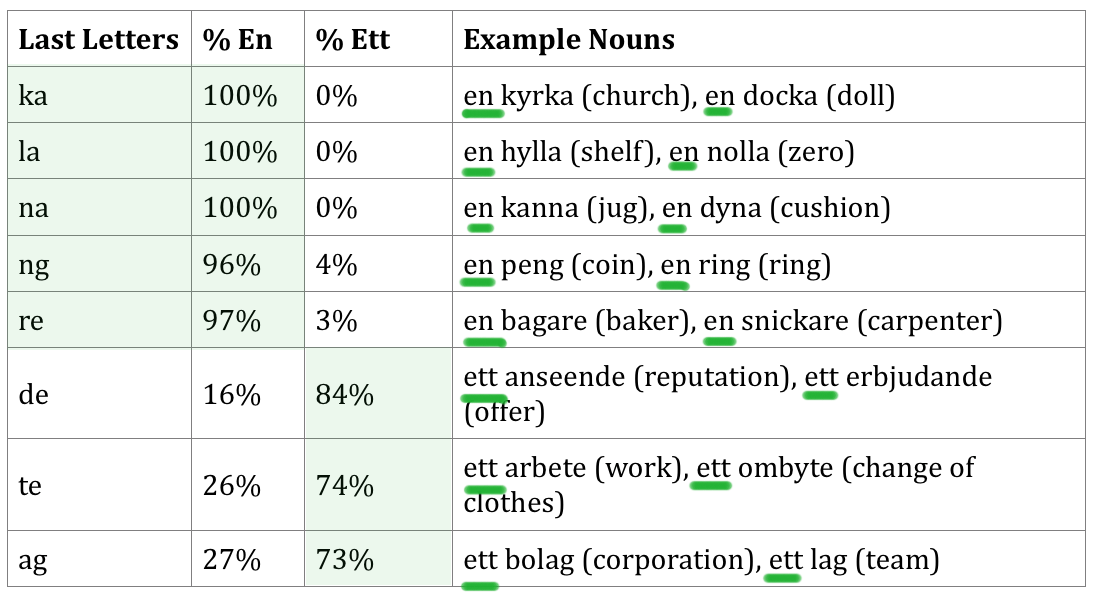En and Ett in Swedish
A very rewarding, but sometimes difficult, aspect of learning Swedish is figuring out the en and ett genders of Swedish nouns. Conventional wisdom (and grammar textbooks) suggests that there are no set rules for when to use each gender. Instead students need to memorize this for every noun. Here are some little known rules that can help with mastering en and ett in Swedish.
The gender (or article) of a noun in Swedish is functionally similar to a or an in English. In English, nouns beginning with vowels are preceded by an and nouns beginning with consonants are preceded by a. Similarly in Spanish (in most cases) nouns ending in -a are preceded by la and other words are preceded by el.
Unfortunately, no such easy rule exists in Swedish. The gender of the noun is extremely important to learn, because it changes the way the noun is written in definitive form, and if you use the wrong gender it also sounds wrong, which you’ll quickly start to hear for yourself as you master the language. A few examples follow:

In the example above, we changed the first letter of the en word mus to “h” and all of a sudden it is an ett word, hus. Unfortunately, this is not true for all words starting with “h” or “m”.
How can an aspiring Swedish speaker go about learning the genders? To start with, the best approach may be to simply memorize the gender when you are memorizing the noun. There are, however, some tricks you can use when encountering a noun you have not seen before. DailySwedish.com analyzed all nouns in its database of over 11,000 Swedish nouns and came up with some key shortcuts:
Tips for learning En and Ett in Swedish
- 74% of all nouns are en nouns and 26% are ett nouns. Thus, if you are not sure you can always go with en and more often than not you’ll be correct!
- By looking at the first letter of the noun alone, you cannot determine if it is an en or ett noun.
- The last letter of a noun is a strong determinant of en or ett. Below are a few examples. Most clearly, if a noun ends in “a” it is an en noun 98% of the time. For words ending in “m” or “p”, they are more likely than most nouns to be an ett noun, but still more likely to be an en noun.

- The last two letters of the noun are an even better indicator to see if it is an en or ett word. Below are a few more examples.

Using the rules above can get you a long way toward proficiency at en and ett in Swedish. And remember that while en and ett in Swedish is very important to learn, no one will fault you for getting it wrong every once in a while. Happy learning!
This article was written by Martin Andersson, the creator of DailySwedish.com, a Swedish language website, created a quiz that allows students to practice the genders.
Help support SwedishFreak.com
Consider purchasing one of these text books and help support our website!
No products found.